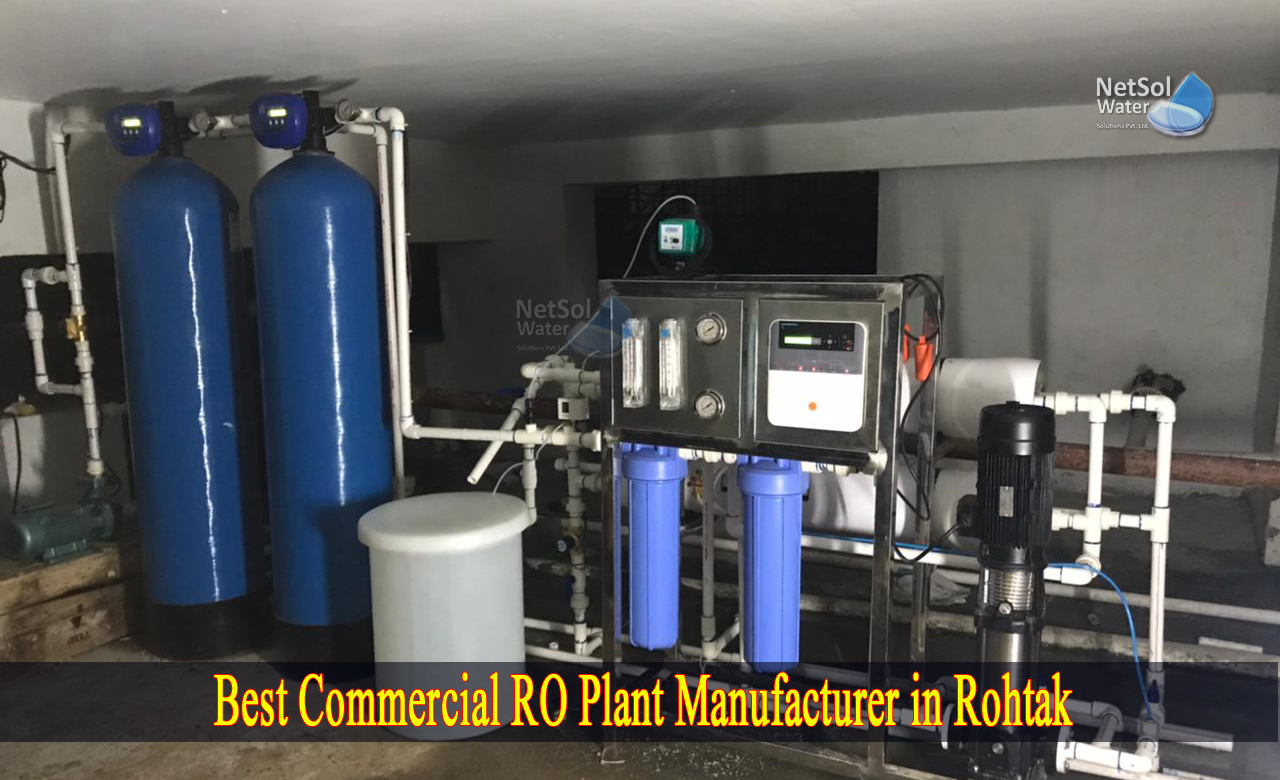Who is the Best Commercial RO Plant Manufacturer in Rohtak?
Reverse osmosis is a continuous operation treatment process that employs pressure to flow source water through a thin membrane and thereby extract contaminants from water. It works by reversing the natural tendency of water containing dissolved salts to pass across a membrane from lower to greater salt concentration.
Working of Reverse Osmosis
Pressure from a pump is utilized in a Commercial RO plant to counteract natural osmotic pressure, driving feedwater with its load of dissolved salts and other impurities through a highly advanced, semi-permeable membrane that eliminates a large proportion of the contaminants. This procedure produces highly cleaned water.
The rejected salts and contaminants concentrate and accumulate above the membrane before being discharged from the system to drain or used for other processes. 75 % of the feedwater in a typical commercial or industrial application is cleansed. 85 % of the feedwater is cleansed in situations where water saving is critical.
Use of Cross filtration
In some of our Commercial RO Plants, cross-filtration is used, where the solution passes through the filter with two outlets. The filtered water travels one way and the contaminated water goes the other. Cross-flow filtration allows water to sweep away pollutant accumulation while creating enough turbulence to maintain the membrane's surface clean.
How does our commercial RO plantoperate?
Commercial RO Plant operation cycle is primarily separated into six primary phases that provide the highest grade filtered water:
Step 1: Water is supplied into the sand filter by the raw pump, which eliminates suspended particles from the water.
Step 2: The water is then passed through an activated charcoal filter for de-chlorination.
Step 3: The water is then filtered further with a micron cartridge filter.
Step 4: Water is then injected into the RO membranes using a high-pressure pump.
Step 5: Only pure water goes through the membranes, whereas most dissolved particles do not.
Step 6: The clean water is then routed via the RO line, while the contaminated water is routed through the reject or recycle line.
Commercial RO Plant: Performance and Design
There are a few calculations that are used to evaluate the performance of our commercial RO plants for design purposes. Our RO systemhas instrumentation that displays quality, flow, pressure, and occasionally additional data such as temperature or operating hours. To correctly quantify the performance of the RO systems, the following operation parameters are required at a minimum:
- Feeding pressure
- The permeate pressure
- Concentrated pressure
- Conductivity of feed
- Conductivity of permeate
- Flow of feed
- Flow of permeate
- Temperature
Let us go through some of them_
1: Percentage of salt rejection: This indicates how well the RO membranes remove pollutants. It does not inform you how each individual membrane is functioning, but rather how the system as a whole performs on average. Most feed water pollutants are rejected by a well-designed Commercial RO plant with adequately functioning RO membranes. The higher the salt rejection, the better the performance of the system. A poor salt rejection might indicate that the membranes need to be cleaned or replaced.
2: Percentage of salt passage: This is the quantity of salts going through the RO system. The lower the salt passage, the better the performance of the system. A high salt passage may indicate that the membranes need to be cleaned or replaced.
|
Salt Passage in % = 1 – Salt Rejection |
3: The percentage of recovery: Percent Recovery is the percentage of water 'recovered' as excellent permeate water. Another way to think about Percent Recovery is the quantity of water that is recovered as permeate or product water rather than dumped to the drain as concentrate. The higher the recovery percentage, the less water you send to the drain as concentrate and the more permeate water you save. However, if the recovery percentage is too high for the RO design, scaling and fouling might cause significant difficulties.
4:Factor of concentration: The concentration factor is a significant equation for RO system design since it is connected to RO system recovery. The more the permeate water is recovered, the more the concentrated salts and pollutants are collected in the concentrate stream.When the concentration factor is too high for the system design and feed water composition, this might result in increased scaling on the surface of the RO membrane.
The idea is similar to that of a boiler or cooling tower. They both have filtered water leaving the system (steam) and finish up with a concentrated solution. As the concentration grows, the solubility limitations may be surpassed and scale may form on the equipment's surface.
Netsol Water is one among the leading Commercial RO Plant manufacturer and supplier in India and outside India, serving a number of consumers. Our various models of Commercial RO Plants like 50 LPH RO plant, 100 LPH RO plant, 250 LPH RO system, 500 LPH RO plant, 1000 LPH Commercial RO plant, etc. are ISO certified, BIS Qualified and have high demand within the water treatment market due to its ability to convert raw, contaminated water into safe and pure water.
We are the leading Industrial/commercial RO plant manufacturers, providing you with the ISO-certified water systems. We customize our Commercial RO Plants to satisfy the precise requirements of our customers at a reasonable cost. We provide fully-automatic and semi-automatic systems. Our Reverse Osmosis Plant is formed of chrome steel or stainless steel material which ensures longer durability of the system.



